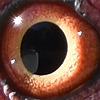HOME | DD
 TheBootesArtVoid — Gouldian Finch
TheBootesArtVoid — Gouldian Finch

#animal #animalphotography #animals #bird #birds #finch #finches #natural #nature #naturephotography #photo #photography #photographyanimals #photographynature #photographyphoto #photos #wildlife #wildlifephotography #birdphotography #wildlifereferencephoto #thebootesartvoid
Published: 2023-12-08 00:33:25 +0000 UTC; Views: 867; Favourites: 78; Downloads: 0
Redirect to original
Description
Species Name: Gouldian Finch
Species Latin Name: Chloebia gouldiae
Alternative Names: Lady Gouldian Finch, Gould's Finch, Rainbow Finch
Native To: Australia
Conservation Status: Near Threatened
Photo Taken At: Healesville Sanctuary
Size (length): 125-140mm (4.9-5.5 inches)
Weight: 14g (5.5oz)
Lifespan: 5-9 Years
Population Size: 2400
Diet: Herbivore, granivore
Lifestyle: Arboreal, terrestial, altricial, congregatory, oviparous, nomadic
Group Name: Charm, rush, treasury, vein
Mating Behaviour: Monogamy
Reproduction Season: Dry season
Eggs Laid Per Brood: 4-8 eggs
Incubation Period: 13 days
Independent Age: 40 days
Baby Name: Chick
Description:
These brightly coloured small birds are sexually dimorphic in the colouration of their feathers, the males will typically have slightly darker colour of purple on their chest in comparison to the females which have a lighter shade of purple on their chest. These birds will have a similar set of colours to their plumage which features a purple chest, yellow stomach, as well as green along the back of their backside including the back of their head and wings. These birds will feature a vibrant blue along their tail with black at the very tip of the tail, a hint of the same blue on their tail is featured where the black of their faces meets the green of the rest of their bodies. These finches can have a variety of different head colours which range from black, red, as well as yellow. The juveniles on the other hand will feature more dulled grayish-creamish colours along their body and with a duller greener shade to their wings. As the juveniles mature the vibrancy to their feathers increase. The juveniles will have more of a dark gray beak to which will eventually fade into the more creamy colour that the adults have.
Diet:
Outside of the breeding season these birds will mostly on nearly ripe or fully ripe grass seeds. During breeding seeding these birds diet will change to consist almost entirely of insects which are rich in protein which is needed to satisfy the appetite of their young. These birds will forage and feed in small to large groups and will generally feed on the ground or in the air when hunting for insects.
Behaviour:
Outside of breeding season these birds will flock together with other species of finches as they seek out food. These birds are known to mix their flocks with Long-tailed Finches (Poephila acuticauda) as well as Masked Finches (Poephila personata) in groups of 1000-2000 birds. During dry seasons these birds will become more nomadic and will travel further distances than normal in order to find enough food, they typically eat about 35% of their body weight each day. During mating season the male will bob up and down and ruffle his feathers in an attempt to show off his bright colours. These birds will lay their eggs in tree holes, the female will lay about 4-8 eggs. Both the parents help care for the eggs during the daytime however, during the night time the mother broods after the eggs alone.
Threats to this species:
Due to the birds bright coloured plumage the bird throughout history has been highly targeted for trapping in the illegal bird trade. Over the years tens of thousands or perhaps more of these birds have been shipped overseas. This illegal bird trapping alongside other factors such as loss of habitat, and predation have reduced their numbers significantly. Furthermore it is believed that fires as well as their vulnerability to a parasitic air-sac mite (Sternastoma tracheacolum) have further reduced the birds numbers at an alarming rate. Some sources will indicate this species to be near threatened where as other sources indicate that this species is endangered.
Further Reading (general information):
Wikipedia: en.wikipedia.org/wiki/Gouldian…
Birdlife: www.birdlife.org.au/bird-profi…
Animalia: animalia.bio/gouldian-finch
Australian Museum: australian.museum/learn/animal…
Related content
Comments: 10

👍: 0 ⏩: 1

👍: 0 ⏩: 0

👍: 1 ⏩: 1

👍: 0 ⏩: 1

👍: 1 ⏩: 0

👍: 1 ⏩: 1

👍: 0 ⏩: 1

👍: 1 ⏩: 0

👍: 1 ⏩: 1

👍: 1 ⏩: 0






















